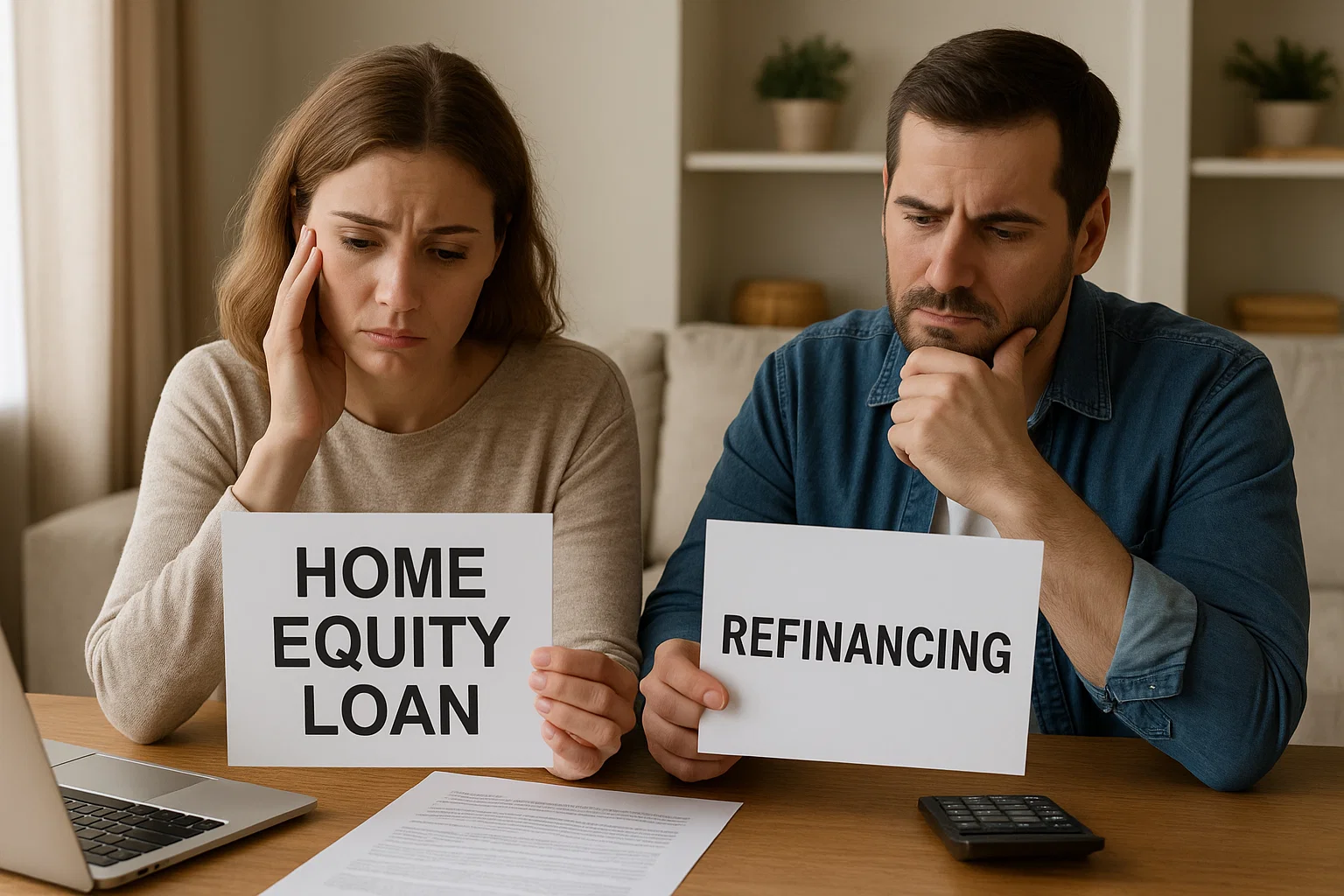Eliminating Private Mortgage Insurance Through Refinancing: Reclaiming Hundreds Every Month
November 19, 2025
.png)
For many homeowners, the process of purchasing a home started with less than the standard twenty percent down payment. While this approach made homeownership accessible sooner, it resulted in an ongoing cost: Private Mortgage Insurance (PMI). This monthly charge protects lenders against the risk of default but offers zero benefit to the borrowers themselves. It is a pure expense that goes into insurance premiums instead of being used for building equity or reducing the principal balance.
Yet, PMI does not have to remain a perpetual burden throughout the mortgage term. As your loan balance decreases and your home's value increases, refinancing provides a strategic pathway to eliminate this costly requirement entirely. Understanding when the equity threshold has been crossed and how to leverage refinancing to remove PMI can reclaim hundreds of rupees monthly, funds that can be redirected toward wealth building, savings, or simply improving household cash flow.
Understanding Private Mortgage Insurance
Private Mortgage Insurance (PMI) exists to protect lenders when borrowers purchase homes with down payments below twenty percent of the property value. This insurance coverage reduces lender risk by guaranteeing compensation if borrowers default on their loans, making homeownership accessible to individuals who have not accumulated substantial savings for a down payment.
However, PMI costs can significantly increase monthly housing expenses. Typically, these costs range from 0.5% to 1.5% of the original loan amount annually, which is divided into monthly payments. For instance, on a ₹50 lakh loan, this translates to approximately ₹2,000–₹6,000 added to monthly payments, depending on the specific premium rate. This money builds no equity and provides no direct benefit to the homeowner.
Refinancing as a Proactive Strategy for PMI Removal
For conventional loans, lenders generally require PMI until the loan-to-value (LTV) ratio reaches eighty percent. This means the borrower has built twenty percent equity through principal payments, property appreciation, or both. While some borrowers wait passively for automatic PMI removal once they reach this threshold through normal payment progression, refinancing offers a proactive method to eliminate PMI immediately once sufficient equity is established.
Refinancing to remove PMI involves replacing your existing mortgage with a new loan where your equity position is more than twenty percent of the property's current value. The new lender views this sufficient equity cushion as making PMI unnecessary, resulting in a new loan that carries no insurance requirement. The outcome is identical principal and interest costs, minus the PMI premium, leading to instant monthly savings for the loan's remaining life.
The refinancing process used for PMI removal is similar to standard refinancing:
- Research lenders offering competitive rates.
- Submit updated financial documentation.
- Arrange a current property appraisal to confirm the equity position.
- Close on the new PMI-free loan.
Typical closing costs generally range from 2–4% of the loan amount.
Essential Questions Before Refinancing

Before proceeding with refinancing to remove PMI, several essential questions must be addressed:
- Has your home's value increased since purchase? Property appreciation accelerates the process of reaching the twenty percent equity threshold, potentially making PMI removal feasible sooner.
- How much principal have you paid down? The combination of principal reduction and appreciation determines your current equity position and whether you are eligible for PMI-free refinancing.
- Will refinancing savings exceed closing costs? You must calculate whether the monthly PMI savings justify the upfront refinancing expenses within your planned ownership timeline.
- Can you secure comparable or better interest rates? Removing PMI while simultaneously accepting significantly higher interest rates may not deliver net savings, despite the elimination of insurance premiums.
When PMI Removal Refinancing Creates Value
The most compelling scenario for PMI removal refinancing occurs when property values in your area have appreciated substantially since the purchase, quickly pushing your equity above the twenty percent threshold. In strong appreciation markets, homeowners can reach PMI-removal eligibility within just a few years.
Homeowners who have been aggressively paying extra principal also create significant PMI removal opportunities, as they build equity faster than standard amortization schedules project. Even modest appreciation, when combined with these extra payments, can push equity past twenty percent years ahead of original timelines. Furthermore, life events that enable lump-sum principal reductions—such as inheritance, bonuses, or business proceeds—can immediately reduce loan balances and accelerate eligibility.
Finally, changing interest rate environments also present strategic opportunities. If you can remove PMI and secure a lower interest rate than your current loan carries, the combined savings become extremely compelling, offering a double benefit from a single refinancing transaction.
Calculating Your PMI Removal Benefits
Real numbers help clarify whether PMI removal refinancing suits a specific situation. Consider the case of Priya from Mumbai:
- Priya financed ₹54 lakh at 8.5% interest three years ago, with a ₹4,500 PMI premium.
- Her property has appreciated to ₹72 lakh, and her balance is down to ₹51 lakh.
- Her resulting equity is ₹21 lakh (29%), which is well above the 20% threshold.
She refinances to a new ₹51 lakh loan at 8.3%. Her new monthly payment becomes approximately ₹40,500 with no PMI requirement. This results in a total savings of ₹6,000 monthly (₹4,500 from PMI elimination plus ₹1,500 from the lower rate), or ₹72,000 annually.
If her refinancing costs are ₹1.5 lakh, she recovers these expenses in approximately two to three months due to the ₹6,000 monthly savings. Every subsequent month represents pure savings. Over the ten remaining years, she saves ₹7.2 lakh compared to maintaining her original PMI-burdened loan. Even if the refinancing resulted in an identical interest rate, eliminating the ₹4,500 monthly PMI alone would save ₹54,000 annually, justifying the ₹1.5 lakh closing costs within four months.
To assess your own eligibility, use online loan-to-value calculators. If your remaining loan balance divided by your property's current estimated value is 80% or lower, you likely qualify for PMI-free refinancing.
Critical Considerations for PMI Removal Strategy

When planning a PMI removal strategy, several critical factors must be evaluated:
- Accurate Property Valuation: Obtaining an accurate current property valuation is crucial, as refinancing success depends on the appraisal confirming sufficient equity.
- Total Cost Comparison: Ensure that the new interest rate plus the absence of PMI genuinely reduces the total payment compared to the current rate plus PMI.
- Ownership Timeline: Evaluate your ownership timeline realistically. You must calculate the break-even point where PMI savings offset closing costs and confirm that you plan to remain in the property beyond that threshold.
- Alternatives: Consider alternatives to full refinancing. Some lenders may allow PMI removal requests without refinancing once equity reaches 20% through appreciation or payments; explore this simpler option first.
- Prepayment Penalties: Review whether your existing loan includes prepayment penalties, as substantial penalties could offset the PMI removal savings.
Building Your PMI Elimination Strategy
Removing PMI through refinancing requires strategically timing the transition when your equity position, personal circumstances, and the interest rate environment align to provide genuine financial benefit.
Start by understanding your current equity position. This may involve researching online property valuation tools, requesting recent comparable sales data for your neighborhood, or hiring a pre-refinance appraisal to confirm your standing.
Calculate the exact monthly savings by comparing your current payment (including PMI) against the projected refinanced payment (without PMI) at available rates. Factor in closing costs and determine your break-even timeline. Only proceed if you plan to remain in the property substantially beyond this recovery period.
Partner with transparent lenders experienced in PMI removal refinancing who can clearly explain equity requirements and total cost comparisons. In today's environment, PMI removal refinancing is a powerful tool for reclaiming hundreds of monthly rupees currently disappearing into insurance premiums.
Approach PMI removal with discipline: confirm your equity position accurately, calculate savings realistically, and compare refinancing against simpler PMI removal requests through your existing lender. The power to eliminate hundreds in monthly insurance premiums exists—it requires the initiative to investigate whether your equity position and circumstances favor making that cost-eliminating move.

Alex Chen

Alex Chen













Get in touch with a loan officer
Our dedicated loan officers are here to guide you through every step of the home buying process, ensuring you find the perfect mortgage solution tailored to your needs.
Options
Exercising Options
Selling
Quarterly estimates
Loans
New home

随时了解有见地的文章和指南。
每周一,你将获得一篇文章或指南,这将帮助你在工作和个人生活中更具活力、更专注和更有成效。





.png)
.png)
.png)
.png)
.png)
.png)
.png)
.png)
.png)
.png)
.png)
.png)
.png)
.png)
.png)
.png)
.png)
.png)
.png)
.png)
.png)
.png)